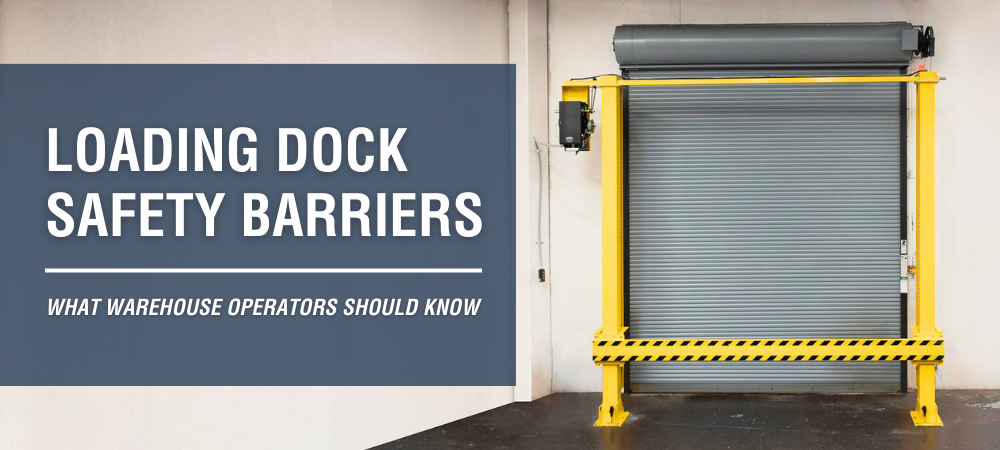We use cookies to make your experience better. To comply with the new e-Privacy directive, we need to ask for your consent to set the cookies. Learn more.
Loading Dock Safety Barriers: What Warehouse Operators Should Know

If your facility has vacant loading docks, you’ve got a potential safety hazard.
Typical loading docks have a 4-foot drop-off, which can be dangerous to workers and equipment. This is not hypothetical: Forklift operators have been fatally injured by falls from loading docks, and it’s difficult to overstate the hazard posed by an open dock door.
Of course, many bay doors remain closed when the dock is not in use — but not always. If your facility opens the loading doors on hot days to let in ambient air, or if you’ve ever kept the doors open while a truck backs into position, you’re taking a risk.
The common-sense solution is to use a safety barrier to draw visibility to the fall hazard and protect workers (and lift trucks) from a catastrophic fall. In this article, we’ll discuss relevant standards from OSHA and ANSI, then provide some tips for finding a solution that works for your facility.
What OSHA Says About Loading Dock Safety Barriers
The Occupational Safety and Health Administration (OSHA) requires employers to provide sufficient protection from falls, though the application of specific OSHA standards is disputed; by some interpretations, loading docks with a height lower than 48 inches are not subject to the provisions of OSHA 1910.29, which covers fall protection systems and protections.
But you certainly shouldn’t rely on a technical interpretation of OSHA regulations when designing safety systems. If a worker falls from a 46-inch loading dock, they’ll certainly suffer a major injury. You have a duty to prevent that injury.
And a quick review of other safety standards highlights the need for loading dock safety. Some relevant standards include:
- OSHA Standard 1910.22 Walking-Working Surfaces
- OSHA Standard 1910.176 Material Handling
- OSHA Standard 1910.178 Powered Industrial Trucks
- ANSI/ITSDF B56.1-2012 Safety Standard for Low Lift and High Lift Trucks
- ANSI/ASSE A1264.2-2012 Standard for the Provision of Slip Resistance on Walking/Working Surfaces
In another blog, we provided safety tips for operating lift trucks on and around dock ramps. That article focuses on workflow practices, and it’s a useful resource when building a hazard assessment strategy — but the simple fact is that if your dock doors are ever left open and unattended, you’ve got an opportunity to improve your processes.
Choosing Safety Barriers for Loading Docks
Loading dock safety barriers can be relatively simple. The cheapest options use high-visibility fabric to warn operators of the potential danger and to protect individual workers from falls.
The disadvantage of fabric safety barriers is, of course, that they’re not strong enough to prevent a lift truck from falling from a dock (and depending on the design, they may not be strong enough to prevent some workers from falling).
Additionally, if a lift truck operator attempts to reverse into a truck, they won’t see the barrier — and they’ll roll right through it.
Ideally, your dock barrier should allow for air circulation while preventing falls for workers and equipment. At BHS, our solution is the Powered Dock Gate (PDG).
The Powered Dock Gate is designed to aid in OSHA compliance, but more importantly, it’s designed to stop 10,000 pounds of force at 4 miles per hour. That’s sufficient to stop a reversing forklift in its tracks.
Features of the PDG include:
- A high-visibility yellow finish to alert workers to open-dock hazards.
- All-steel construction with a reinforced structural channel.
- Quick operation via an electric motor and push-button control.
- Manually operated models are also available.
A single lift truck roll-off can have catastrophic consequences, endangering workers and creating an enormous liability for your facility. The Powered Dock Gate provides an efficient and ergonomic solution.
To learn more, contact the BHS Sales Team at 1.800.BHS.950 or view the Powered Dock Gate on our website.
